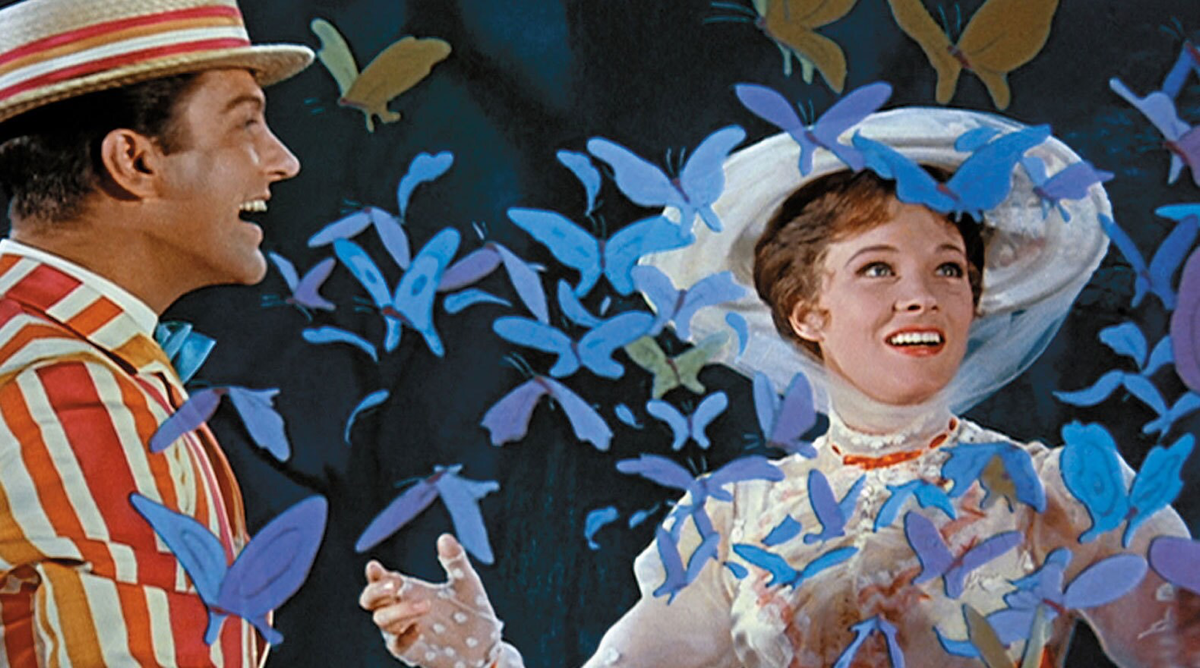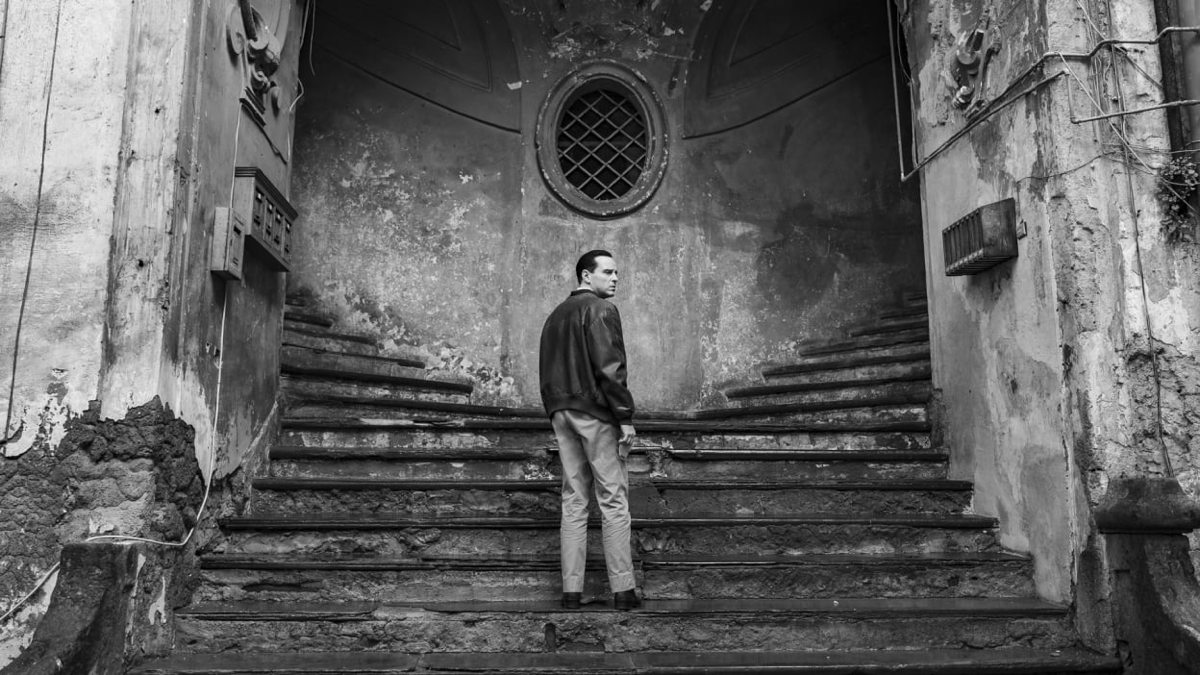Hi, hello, how are you? Has it been a month? To me it feels like a couple of weeks at most, but — in case it feels like longer to you — a reminder: this is Syzygy Business, a newsletter miscellany inexplicably tied to the lunar cycle; your author is Adam Wood. I have a host of smaller notes to share with you this time around, and no way to tie them together. Feel free to skip that which doesn’t appeal, and if you reach the end having encountered nothing of interest, I keep an unsubscribe button down there for a reason.

A few weekends ago I was the only person at a 60th anniversary screening of Mary Poppins (1964). I adored the film as a child — had even once harboured desires of making a career as a chalk pavement artist like Dick Van Dyke’s Bert — but had probably not seen it start-to-finish in three decades. Reader: it was an absolute delight. The pastel colours, its effervescent tone, the wink in every performer’s eye. One benefit of being the only person in such a screening is that you get to sing the songs aloud, even if your jaw is hurting from too many liquorice comfits, and too much smiling.

My other visual entertainment highlight of the month has been Steven Zaillian’s adaptation of The Talented Mr Ripley for Netflix — this version titled simply Ripley. I’ve long been an admirer of Zaillian’s measured, polished writing for the screen (Awakenings (1990); Moneyball (2011); The Irishman (2019)), and his most recent television work, as writer and director of HBO miniseries The Night Of (2016), was truly exceptional. I have also found him to be a superb adaptor, deft at hewing from less-than-streamlined texts that which can make them magnetic on screen: Hannibal (2001) owes as much to Zaillian’s scalpel and pen as it does to Ridley Scott’s eye. It is also partially Zaillian’s sense of pacing, and his talent for building character subtly through layered detail, which raises David Fincher’s 2011 adaptation of The Girl With the Dragon Tattoo far above the Swedish original for me.
Here, as writer and director on Ripley, he is not only bringing Patricia Highsmith’s beloved 1955 novel to the screen, but doing so in the knowledge that a preponderance of viewers are likely to have seen a version of this story already: Anthony Minghella’s 1999 film starring Matt Damon, Jude Law, and Gwyneth Paltrow. One cannot help but draw comparisons between the two adaptations, but the surprise to my mind was that most of them settle in the new version’s favour. Minghella’s film is drenched in Italian sun, and his characters are magnified in its glow. Jude Law’s Dickie Greenleaf (a candidate for most memorable career performance) is an impossibly beautiful, supremely charming presence with whom everyone else in the film can’t help but fall in love. In fact, Paltrow’s turn as Marge is largely overshadowed by her proximity to him. Zaillian, given more space across ~8 hours of television, almost reverses the polarity of this relationship. In his rendering, Marge is the more compelling of the two — smart, cautious and knowing as performed by Dakota Fanning — and Dickie (Johnny Flynn) is recognisably unsure of his footing: a rich boy casting around for some sense of meaning to his life — not something that seemed to trouble Law’s Dickie much at all.
But it is in the eponymous Thomas Ripley that the most marked shift is felt. Damon’s version of the character, whilst excellent fun to watch, can’t help but be influenced by the fact that... it’s Matt Damon. In any other film, where he’s not stood in the white heat coming off Jude Law, Damon as Ripley is the centre of attention. A pair of glasses and a button-down shirt only go so far in convincing the audience otherwise, and — to the film’s credit — it showcases a Tom who is, in fact, capable and (for the most part) self-assured throughout. In Zaillian’s telling — again, with the benefit of a longer running time — Ripley is rarely in full control. Andrew Scott’s nervy, shifty Tom is less of a mastermind and more an opportunist whose sociopathy allows him to cross boundaries others would not. The script (and performance) also carries new undercurrents of repressed sexuality, self-loathing, and fascination with aesthetic violence. These changes, alongside Zaillian’s mastery of pace, make for a compelling slow-burn, from which it’s difficult to avert one’s eyes.
It helps, also, that the thing looks so darn good. I can’t help but suspect that the choice to shoot in black and white was made early in the process, so central is it to the overall tone of the work. For one thing, it gives Zaillian and his crew permission and purpose to search for interesting angles and framing, an effect that reveals the beauty of the work’s Italian settings piece-by-piece. Of this, in conjunction with the series’ repeated use of Caravaggio’s paintings as a motif, Shannon Connellan writes:
Caravaggio was famed for the brutal, bloody realism in his paintings, all rendered with chiaroscuro (an Italian term meaning light-dark) and tenebrism (from the Italian tenebroso, meaning darkened and obscured) — a technique Ripley also wields through its black-and-white cinematography and commanding use of light and shadow. Director of photography Robert Elswit shows every last detail of David Gropman's production design in high contrast, with the Ripley lighting team obscuring and revealing vital clues, intensifying reactions, and capturing the elegance of Italy all through tenebrist and chiaroscuro techniques.
If you watch Ripley, particularly if you’ve not read the novels, or seen the Minghella version, I’m curious to know what you think.
Not entirely coincidentally, I also recommend this recent piece on Caravaggio, by Ed Simon for Hyperallergic:
The question of how we understand great art created by bad people isn’t commensurate with Caravaggio’s pained ecstasies, for part of the miracle of his entire corpus is that such work could come from a hand that murdered
•••
As I type this, Taylor Swift’s new (double?) album The Tortured Poets Department is the topic of much debate. I’ve listened through twice: once to the 16 track standard version, and once to the 31 track ‘anthology’ version. I’ll spare you my first impressions, but I feel the need to shout from this little soapbox of mine about a grammatical clanger that has made me wince on both listens. On (otherwise pretty good track, which I nevertheless may struggle to listen to much more) ‘But Daddy I Love Him’, the lauded lyricist and American Music Awards Artist of the Decade, drops this:
And it's just my choice
There's a lot of people in town that I
Bestow upon my fakest smiles
Honestly, the credits for this album scroll forever. Did not one person point out that the above makes no sense? If it was in my gift, I’d revoke at least one of Swift’s fourteen Grammys.
•••
We lost John Barth a few weeks ago. His was one of those names that I didn’t know until I started studying literature: a mainstay of metafiction, a chronicler of postmodernism. When I heard the news, I re-read his most famous piece, ‘The Literature of Exhaustion’, written for The Atlantic in 1967. Even in the broadest terms it was strangely reassuring to be reminded that some anxieties persist across (at least) a half-dozen decades:
Whether historically the novel expires or persists seems immaterial to me; if enough writers and critics feel apocalyptical about it, their feeling becomes a considerable cultural fact, like the feeling that Western civilization, or the world, is going to end rather soon.
Also, in amongst his erudite hand-wringing about the necessity to consistently reinvent the novel as a form, I came away wanting to know much more about Barth’s neighbour:
[I]t’s dismaying to see so many of our writers following Dostoevsky or Tolstoy or Flaubert or Balzac, when the real technical question seems to me to be how to succeed not even Joyce and Kafka, but those who’ve succeeded Joyce and Kafka and are now in the evenings of their own careers. In the second category are such folk as an artist neighbor of mine in Buffalo who fashions dead Winnies-the-Pooh in sometimes monumental scale out of oilcloth stuffed with sand and impaled on stakes or hung by the neck.
•••
I’m still trying to snap more photos, and I brought a few to share:
Listen, I think you should write a blog. Yes you. No, not someone else reading this newsletter — you. I've been doing it for decades, and I want you to put your thoughts and feelings into words, and hit publish. It doesn’t even matter what you write about: life with your dog; your crochet project; best places near you to walk / sit / drink coffee. Writing helps you think, and to share without expectation is to offer a gift.
And I have great news: it’s never been easier to start. One of the benefits of the (ongoing) collapse / weirding of the social media landscape has been a spike in interest for older formats: blogs, newsletters, RSS. In turn, new services have sprung up like spring daisies, offering new ways to get your words onto the web in a form that you own and control. Let me point you to my favourite: PIKA, a project by the folks at Good Enough.
All you need to do is follow that link, hit the big ‘Give Pika a try’ button, and you’ll be the owner of a brand new blog in less than a minute. PIKA could not be easier to use, and it’s entirely free for your first 50 posts. Once you’ve published something — anything — let me know, and you’ll have your first reader. If you would like assistance with any aspect of this at all, email me or message me on Signal — it will be a joy to help in any way I can.
Some of your fellow Syzygy Business subscribers already have blogs, and it’s my pleasure to point you towards a couple of them now:
• N writes about ‘books, travel, culture, and the odd bit of baking’ at Ramblings of a Nobody;
• Robert writes about ‘faith, noise and technology’ on Canned Dragons
You should write a blog too, and I will happily point people to it in a future issue if you so wish.
•••
A few briefer notes to close out on.
• Mark your calendar for 26 November: the newly-announced publication date for the English-language translation of a new Haruki Murakami novel, The City and Its Uncertain Walls.
• Online poetry journal Midst publishes poems as re-playable timelapses, so that you can witness the act of the piece being composed.
• Fellow devotees of The Bear may be aware that (best character) Neil Fak is performed by Matty Matheson, an actual real-life chef. Recently his Matheson Food Company unveiled a new brand identity, and I’m digging the bold typography and 1930s-inspired packaging.
• I was, by happenstance, reminded of the existence of a web-comic I used to frequent, and was happy to see it’s still a going concern: Perry Bible Fellowship.
• Music pick of the week is this new Jade Bird EP from a couple of weeks ago, which is so good it makes me sad that its existence likely connotes a longer wait for the next album.
•••
OK, we’re done. My thanks to you for indulging me once again this month. The next issue of Syzygy Business should land with you on 23 May. Until then, please take care of yourself and those around you, and if you’re in the UK, remember to take photo ID with you to vote on 2 May.
✌🏻
— Adam



